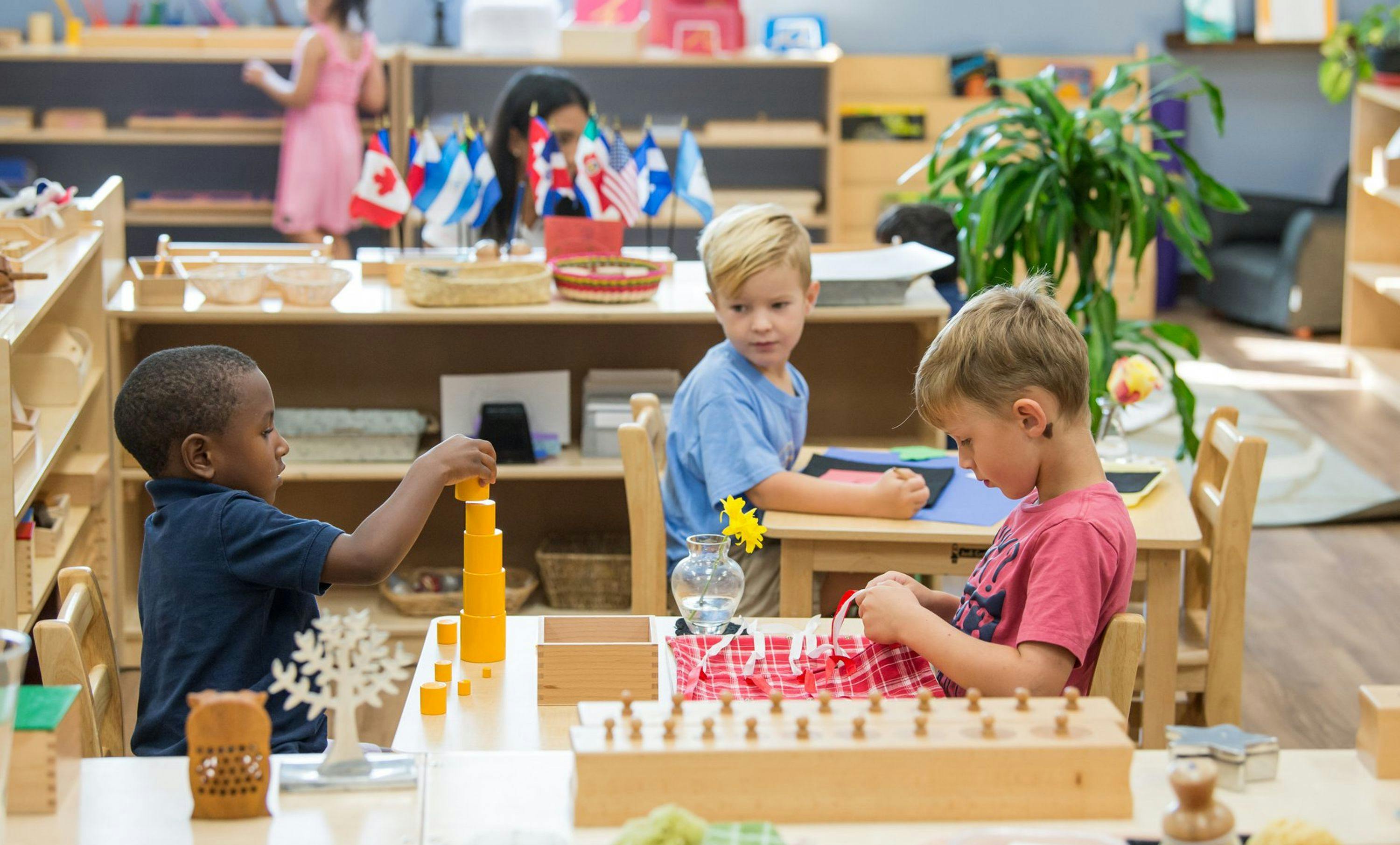How to Bridge Discipline from School to Home with Lead Guide Brittany Brady
Brittany Brady, Lead Guide for the Toddler Community at Guidepost Montessori at Gambrills, offers concrete tips for how parents can bridge discipline from school to home
The Guidepost Team
While there will always be differentiators in the child’s experience from classroom to home, partnering on a consistent approach to discipline between parent and guide is effective and respectful to the child’s developing sense of self. Not only is it an important partnership for the child’s social and emotional development, it is also a valuable means of community support for the adults.
Brittany Brady, a.k.a. Ms. Brittany, Lead Guide for the Toddler Community at Guidepost Montessori at Gambrills, shares her experience approaching discipline as an educator and offers concrete tips for how parents can add classroom communication tools to the home.
First, how do you define a “disciplined” classroom?
Each classroom community will have its own expectations and standards that the children know and respect. When we as guides think about a “disciplined” community, which is not a term that I like to even use due to its negative connotations, what we are really referencing is that state of normalization when children are actively working and deeply engaged in their lessons. Discipline, in a Montessori community, is an ongoing process that children are always working intrinsically to master, and we are there to guide and model. It is not a process of simply commanding children to do something.
Why does our language matter so much?
How we communicate to children in the classroom under this framework of discipline is different compared to what you might see in other traditional early childhood programs. In a child-led environment, there is a lot more freedom given to children; however it is within age-appropriate limits. With this freedom comes responsibility. If children are not being respectful of their work, not being kind to a friend, or being harmful in any way, that is when we intervene.
We emphasize:
- Redirection and positive framing of what the child can do
- Modeling the behavior that we expect
- Consequences and concrete reasons for our expectations and limits
We avoid:
- Saying “No” repeatedly
- The old adage, “Because I said so.”
- Too many questions or choices where clear guidance is needed
That last one can be tricky to navigate. Questions and choices can be a helpful way to frame many aspects of our communication with children, but it is a framing that can also be misused. For example, “Do you want to go to the bathroom?” won’t be effective if you are toilet training your toddler. Instead, it should be, “It’s time to try to use the toilet. This is what we always do before we leave the house.”
This framing can be used for almost any transition that isn’t optional: Instead of, “Would you like to…?” Replace with, “It’s time to …”
Our Actions Matter More
Slowing down to guide our children is often easier said than done. Ms. Brittany offers three key tips for more intentionally modeling the behavior we expect of our children at home.
- Reframe, “because I said so” with concrete reasons. Provide honest, factual information on the reasoning behind your communication.
"We always wash our hands before dinner because we need to clean the germs off our hands.”
"Jumping on the bed is not safe, and you can hurt yourself." - Behave as you expect your child to behave. Children learn what is expected of them through watching our movements and listening to our words. It is important for us to show our children what is expected of them.
- Sportscast while you are modeling these expected behaviors.
“I am using my walking feet in the house.”
In This Series
The Guidepost Team
The Guidepost Team is a group of writers and educators dedicated to helping demystify all things Montessori.
Sign up for our newsletter
Get started with our community today! Sign up for resources.
